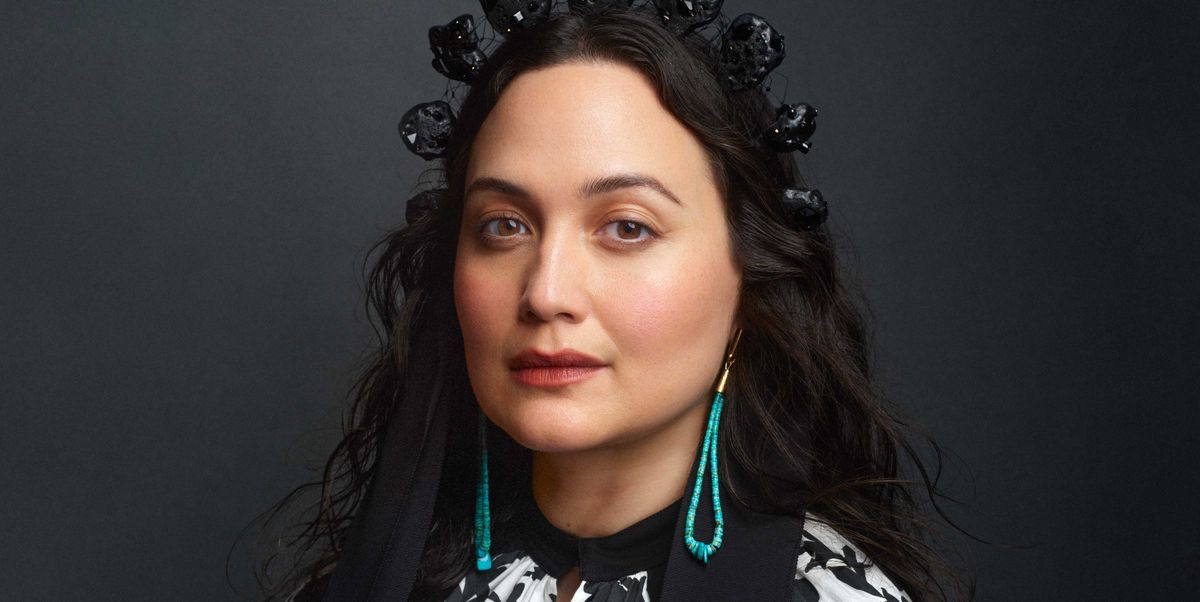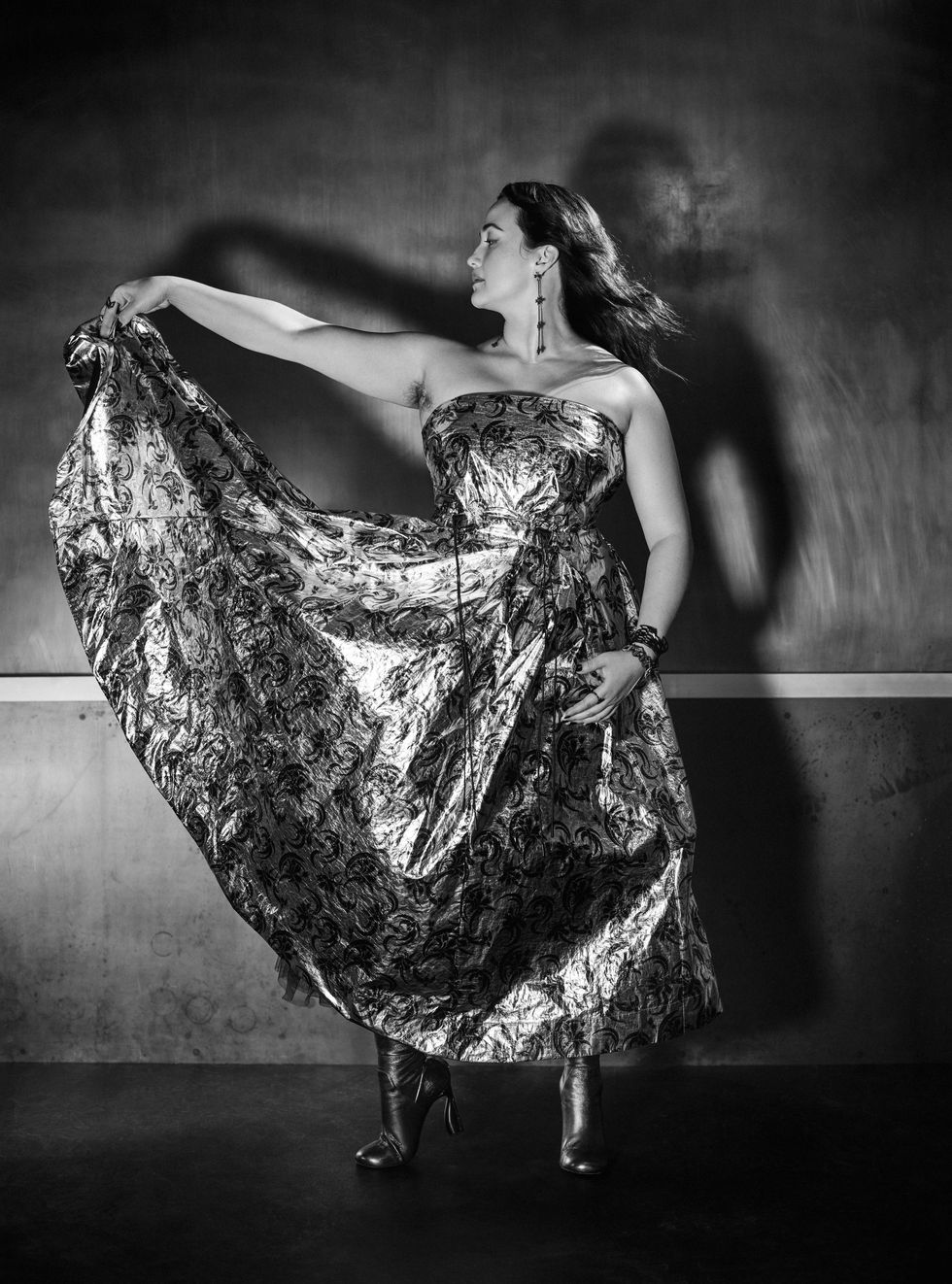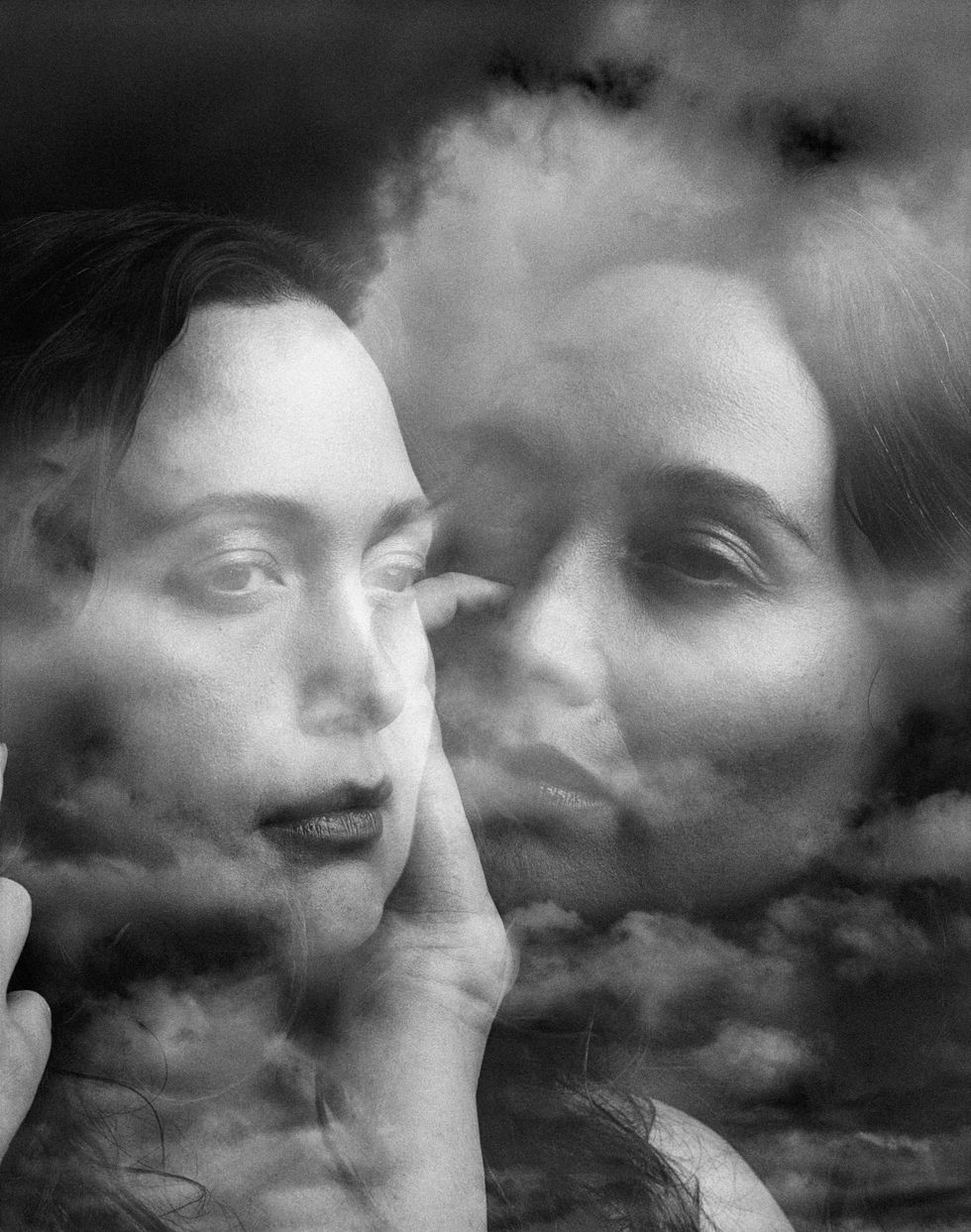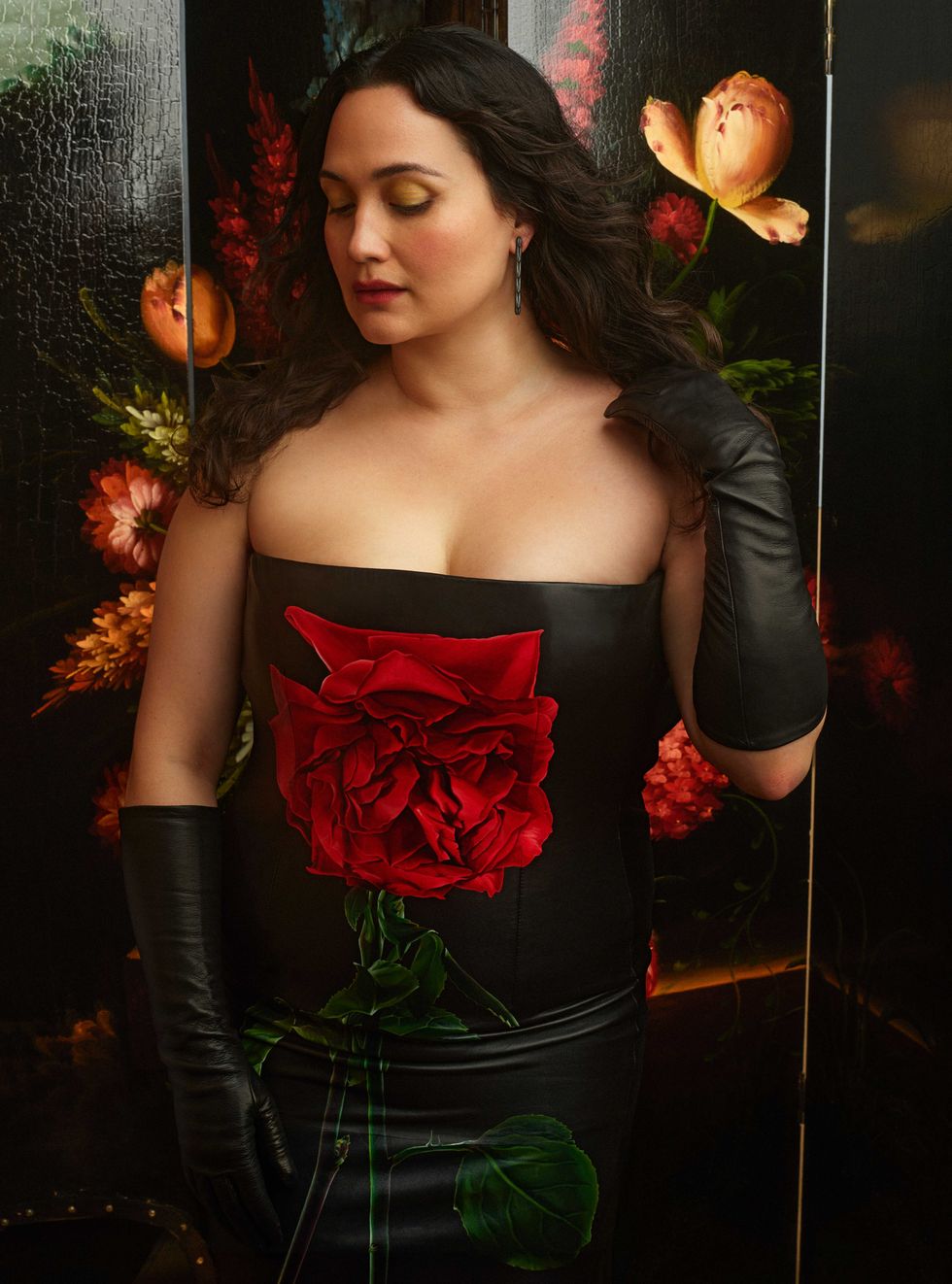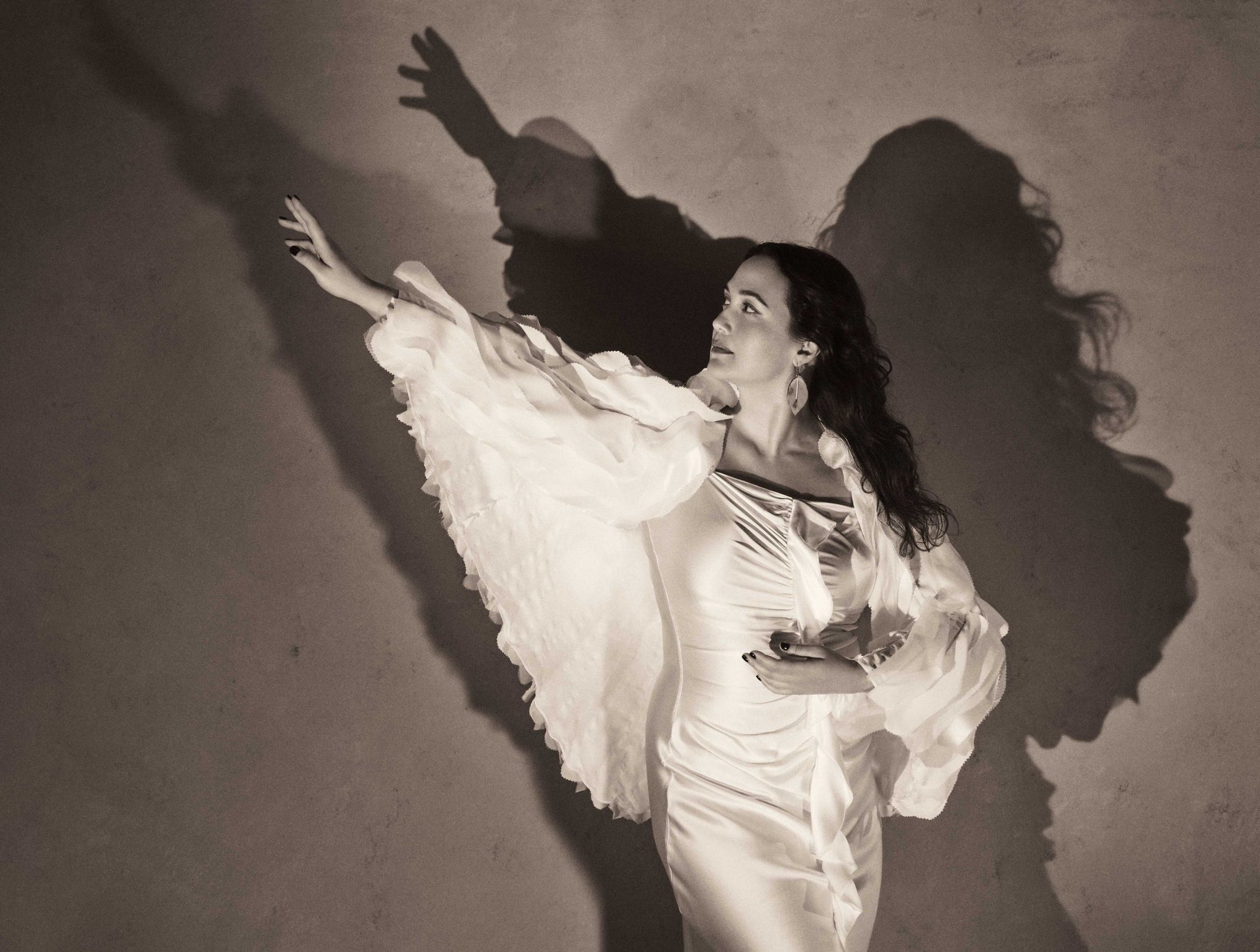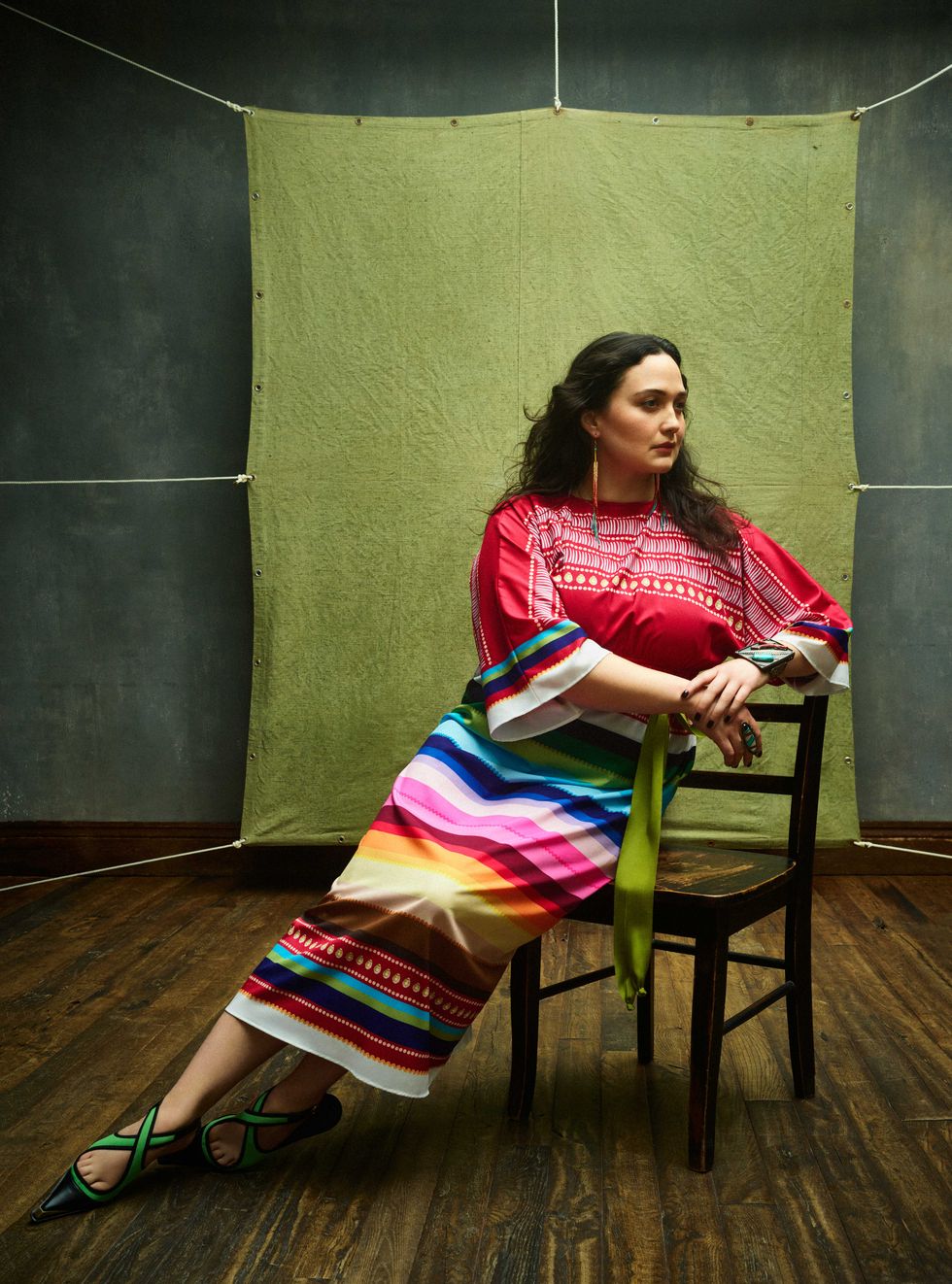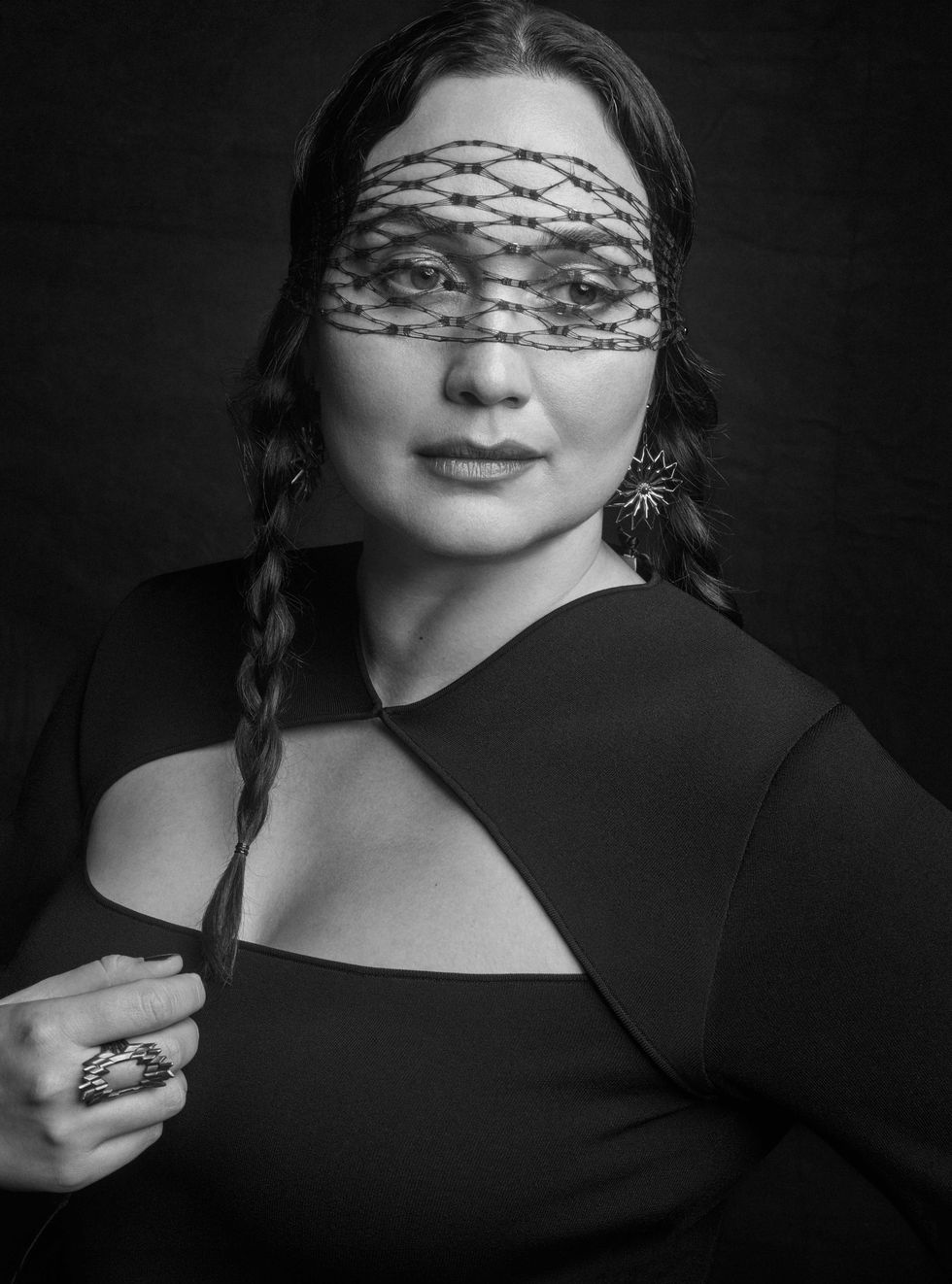Lily Gladstone recently debuted in Cannes, posing alongside her friend and Killers of the Flower Moon costar, Leonardo DiCaprio, wearing Valentino: a devastatingly beautiful black cashmere cape with abstract floral embellishments that seemed made for her alone. The cape was from Valentino’s fall 2022 couture, part of a collection that, per the brand, “broadens the spectrum of beauty” by centering the formerly peripheral, turning “into protagonists those who, once, did not even have supporting roles.”
That’s Native women in a nutshell, especially in Hollywood. We’re rarely portrayed as people with scope or dynamism, but Gladstone, who has Blackfeet (Siksikaitsitapi) and Nez Perce (Nimíipuu) heritage, never makes herself smaller. “I’m not sure I know how to dissolve in the background,” she tells me via Zoom, leaning in so close to the screen that it cuts off the top of her head. She’s been subverting the lens for years, as in her 2016 performance in Kelly Reichardt’s Certain Women, which offers a rare depiction of a queer Native woman. (“I’ve been really lucky that my career has largely been shaped by women filmmakers,” she says.) Now her performance in the Martin Scorsese–helmed Killers could make her the first Native person in history nominated for an Oscar for Best Actress.
Who better to challenge the common perception than a Native actor who’s been known to fight for better representation, equity, and equality, even when it carries a cost? During Gladstone’s sophomore year at the University of Montana, where she was studying drama, the department decided to add Peter Pan to its fall slate. She was the only Native woman student in the department at the time, so people told her she’d be “a shoo-in for the role of Tiger Lily,” she said in 2019. She refused to prepare an audition, even though students were expected to read for every production. Taking the stand isolated her, but motivated her to expand the way Native people are seen.
Recently, she was photographed protesting with fellow SAG-AFTRA members in Times Square, sign in hand, dancing a little, ready to fight. It’s in contrast to Gladstone’s work onscreen—somatic, focused on quiet, subtlety, and movement. “I don’t really come into these spaces pushing my presence to the front,” Gladstone says. She works from the heart, where she says her spirit lives: “The audience will know you’re feeling it if you’re feeling it.”
On her goals
“I’ve never really been an eye-on-the-prize person. There’s a quote from Carl Sagan and Iosef Shmuelovich’s book, Intelligent Life in the Universe: ‘The prey runs to the hunter.’ That’s something that’s kind of governed what my goals are—just keep doing it, and what’s meant to find you will come to you. But really, if there’s any goal that I think I have maintained or sustained throughout, it’s just ‘Be happy.’ Be happy with what you’re doing, because it’s easy to be distracted by the trimmings and lose sight of why you’re doing it.”
On getting into a role mentally
“If I’ve been a character who has to be holding a lot of trauma, I’ll make them left-handed. I’m right-handed. That takes a lot of physical work, but literally being able to hand yourself off to yourself….It’s an easier way to physiologically carve out two different spaces.”
On life lessons
“A lot of my training has been about surrendering to the moment, and it’s a good life lesson that you can apply to just about anything. A lot of it is just being present and accepting what you have. I think if you’re going to have any longevity in a field like this, it’s so unpredictable—you have to surrender and let go. I mean, case in point: I don’t know where I’m going to be this weekend. Depending on how powers outside of my control go in Hollywood, my life could go to this coast or to that coast—it’s just a little bit maddening if you don’t figure out how to surrender.”
On dealing with criticism and hate
“When I accepted this role, I knew that my life was going to be taking a very different turn and I would have a much bigger spotlight on me. So I’ve had a low level of anxiety for the last couple of years about what’s going to happen when the internet figures out who I am. So far, I’ve been very pleasantly surprised that there’s way more love than hate out there. And that goes back to community. It’s been an incredible reminder of like, Okay, maybe all these things that I’ve been saying—that representation really matters, that seeing yourself represented gives you a sense of your place in the world [resonated with people]. So my anxiety went away when I started seeing all the love and excitement and support.”
On mastering the nerves
“It goes back to that surrender thing. When I’m trying to fight it is when my hand shakes or my vocal cords start seizing up. All these little tiny, physiological ways that your body is processing all your adrenaline—they just seem to get worse the more you fight it. Having so much theater under my belt before stepping into set of film [was also helpful]. You get a little bit addicted to the rush of nerves before you go onstage. And when I’m not feeling that is when it becomes a slog. So I don’t fight them too hard. Vulnerability is what makes your work accessible to people.”
On her “only in Hollywood” moment
“Marty’s 80th birthday party. I couldn’t turn around without being like, ‘Oh my God.’ First I sat next to Robbie Robertson, who I’ve loved since I was a kid. Before I did a lot of theater, I was just a little expressive, chunky ballerina who would choreograph my own dances, and I did a lot of choreography to Robbie Robertson & The Red Road Ensemble. Then I was introduced to Steven Spielberg—it was the third time that we met. We were like, ‘Oh yeah! We know each other.’ That was all in the span of 10 minutes. Margot Robbie was seated at one table; Jennifer Lawrence was at another. And in all of that, the person who was grounding for me was Leonardo DiCaprio. Like, where’s my friend? There’s my friend! What is happening? So that was a very Hollywood experience—I couldn’t turn around without a titan right there.”
Hair by Bob Recine, makeup by Romy Soleimani, manicure by Casey Herman, all at The Wall Group; set design by Jakob Bokulich; produced by Ruth Levy and Madi Overstreet.
A version of this article appears in the December 2023/January 2024 issue of ELLE.
This story is part of ELLE’s 2023 Women in Hollywood portfolio, our annual celebration of the women we loved watching this year. Click the link below for all the cover stories.

Terese Marie Mailhot is from Seabird Island Band. She’s the New York Times bestselling author of Heart Berries: A Memoir.
